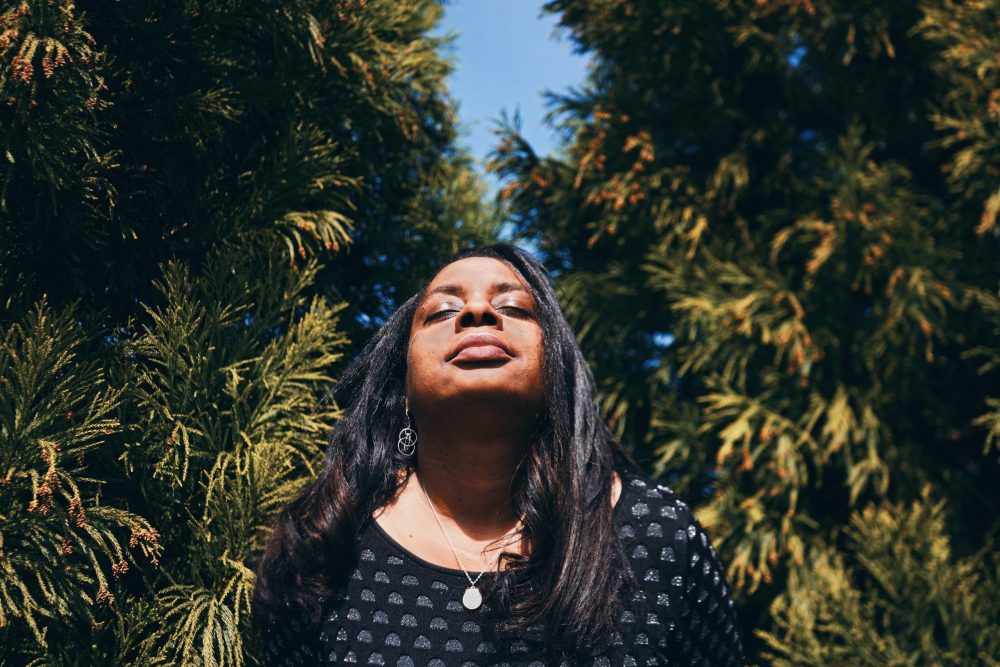Read More Women
Katrina Carrasco’s Favorite Books by Non-Men
The author of “The Best Bad Things” shares her most influential books by women and non-binary writers

What are the best bad things? I think at this moment in history we can all agree: the best bad things are the ones that happened at least a century ago, so we don’t have to constantly worry about them. Which is why Katrina Carrasco’s novel about a 19th-century female detective, despite being full of thrills and suspense, is also kind of a nice break. Getting worked up about opium smuggling rings in 1887 feels wholesome and cleansing compared to getting worked up about the future. Maybe that’s why The Best Bad Things was listed among 2018’s most anticipated crime fiction on CrimeReads.
Many of Carrasco’s picks for her favorite books by non-men also look backward: to 15th-century Italy, to the vaguely-defined 19th century, to the Napoleonic era, or simply to the author’s own childhood.
Read More Women is Electric Literature’s series, presented in collaboration with MCD Books, in which we feature prominent authors, of any gender, recommending their favorite books by women and non-binary writers. Twice a month, you’ll hear about the five non-male authors who most delight, inspire, and influence your favorite writers.

How to Be Both, Ali Smith
How to Be Both is enchanting, with gorgeous prose, playfulness in form, and a deep curiosity about the world. Smith’s ability to examine ordinary objects in an extraordinary new way demonstrates such delight in the human experience, and her writing is a joy to read. The story is split into two sections, with one following a young British girl called George and the other following Francescho, a painter in 1400s Italy. (As another form experiment, some editions begin with George’s story, while others begin with Francescho’s.) The book explores duality and separation, how pictures or memories of people cannot be those people; Francescho says of painting: “As soon as I’d painted them into the skin of the fresco they stopped being the people I knew.” But as alluded to in the title, How to Be Both is perhaps more interested in blurring those binaries: in exploring spaces in between in relation to gender; to memories of people and their present selves; and to fiction and reality. In addition to Smith’s style and the freshness of her observations, I also love the book’s abundance of queer female characters and its carefully rendered, tender mother-daughter relationships.

McGlue, Ottessa Moshfegh
Dense, dark, and gristly prose — McGlue was my introduction to Moshfegh’s work, and I was immediately captivated by her writing and the foggy, twisting narrative she crafts. The book follows McGlue, a sailor in a murky epoch (somewhere in the 1800s) who is in prison for murder. But as he is an habitual drunk, and not inclined to straightforward storytelling, the events that led to his imprisonment must be slowly and painstakingly recollected, questioned, and reconstructed again. I love an unreliable narrator, and in McGlue, Moshfegh has created a grimy paragon of that conceit; for me, this book was a master class in the art of withholding information while keeping the reader engaged and curious. At times, as McGlue drifts in and out of remembering, the narrative lapses into a stream-of-consciousness style that reads more like poetry than prose; yet there is always a sense that Moshfegh has total control of the story, even as it becomes more delirious.

The Passion, Jeanette Winterson
The Passion follows two principal characters: Villanelle, a gambler and adventurer, and Henri, a former cook and soldier for Napoleon. Winterson’s writing is lovely, which makes some of the wartime atrocities in the narrative seem even starker because they are told with such grace. While reading the book, I found myself underlining a great number of passages, either because the turn of phrase was so beautiful, or because Winterson perfectly encapsulated a feeling or experience. I read The Passion during a time of great upheaval in my life, soon after coming out as gay, when I was leaving much behind as I stepped into my new identity. And in the book I found these lines, which stunned me: “When passion comes late in life for the first time, it is harder to give up. And those who meet this beast late in life are offered only devilish choices. Will they say goodbye to what they know and set sail on an unknown sea with no certainty of land again? … And if they do, you will have to strap them to the mast as the boast pulls away because the siren calls are terrible to hear and they may go mad at the thought of what they have lost.” At the moment when I needed to see my heart reflected on the page to know I was neither crazy nor lost forever, The Passion spoke to me so deeply about love, loss, and the journey of living that it will remain one of the most important books I’ve ever read.

Woman Hollering Creek and Other Stories, Sandra Cisneros
This collection of short stories set along the Mexico/U.S. border crackles with love and pain and fierceness. Woman Hollering Creek and Cisneros’s The House on Mango Street were my first experiences of reading books that wove Spanish and English together — the first time on the page I was welcomed in both languages, with the words of my family and my childhood. These books awoke my interest in the ways in which narratives can perform as open or shut (or call for deciphering, an invitation to unlock their meaning) to specific readers when multiple languages are in play. In Woman Hollering Creek, Cisneros uses her unmistakable voice to narrate “othered” lives. There are queer love stories that bear scars and weather insults, and queer love notes disguised in code. There are stories about women who break the constraints society places on them: women who work through ambivalence around motherhood, or carve their own way as female artists. In search of the furiously powerful divine feminine instead of a patiently suffering saint, one narrator says to the Virgen de Guadalupe: “I wanted you bare-breasted, snakes in your hands. I wanted you leaping and somersaulting on the backs of bulls. I wanted you swallowing raw hearts and rattling volcanic ash.” In her stories, Cisneros makes spaces for women and queer folks to find their own agency. She also writes radiant tales about women helping other women survive and thrive, and deep female friendships.

Fun Home, Alison Bechdel
This memoir in graphic-novel form packs the double-punch of Bechdel’s drawings and her remarkable storytelling skill. Fun Home follows the author from childhood to young adulthood, tracing in parallel how the author comes into her own queerness while discovering her father is having affairs with men. Bechdel’s recounting of her youth and budding sexuality make the memoir an essential queer text, and her exploration of her relationship with her father makes the memoir strikingly singular and deeply emotional. In Fun Home, Bechdel and her father share a love of books — her father was a high school English teacher — and letter, books, and literary quotes appear in the illustrated panels and text accompanying them. These make the book pleasingly dense and rich: there is the sense of many layers of words and images that require decoding and interpretation, much as the adult Bechdel, guiding the narrative, finds herself trying to decipher the essential truth about her father and his character based on their relationship in her youth.








